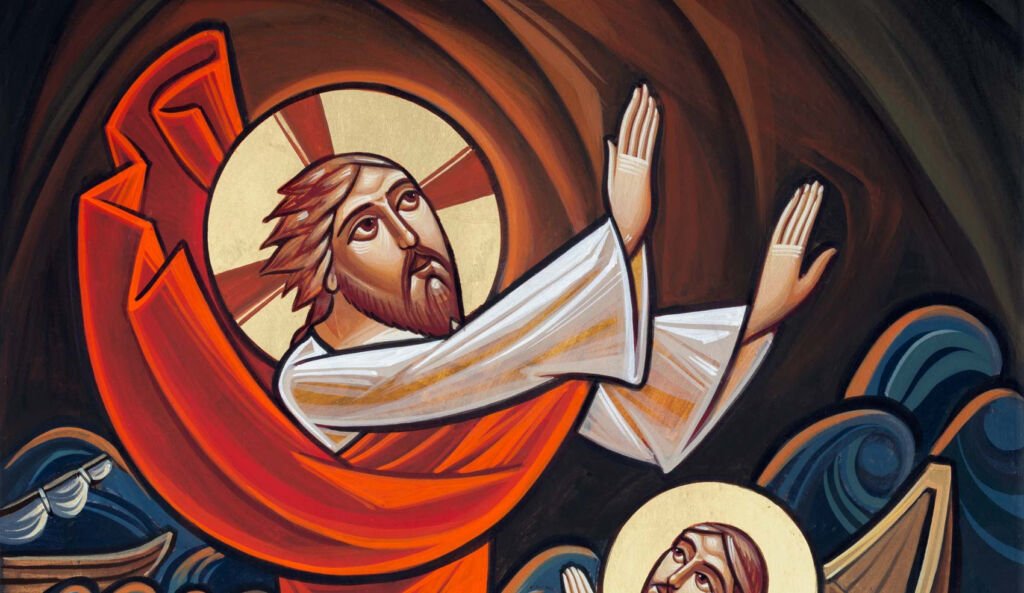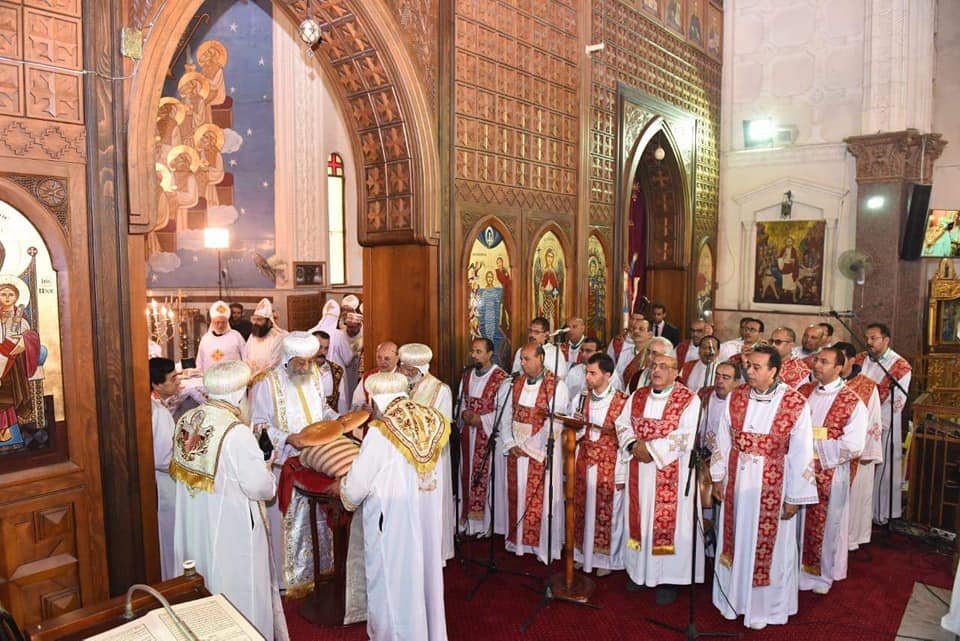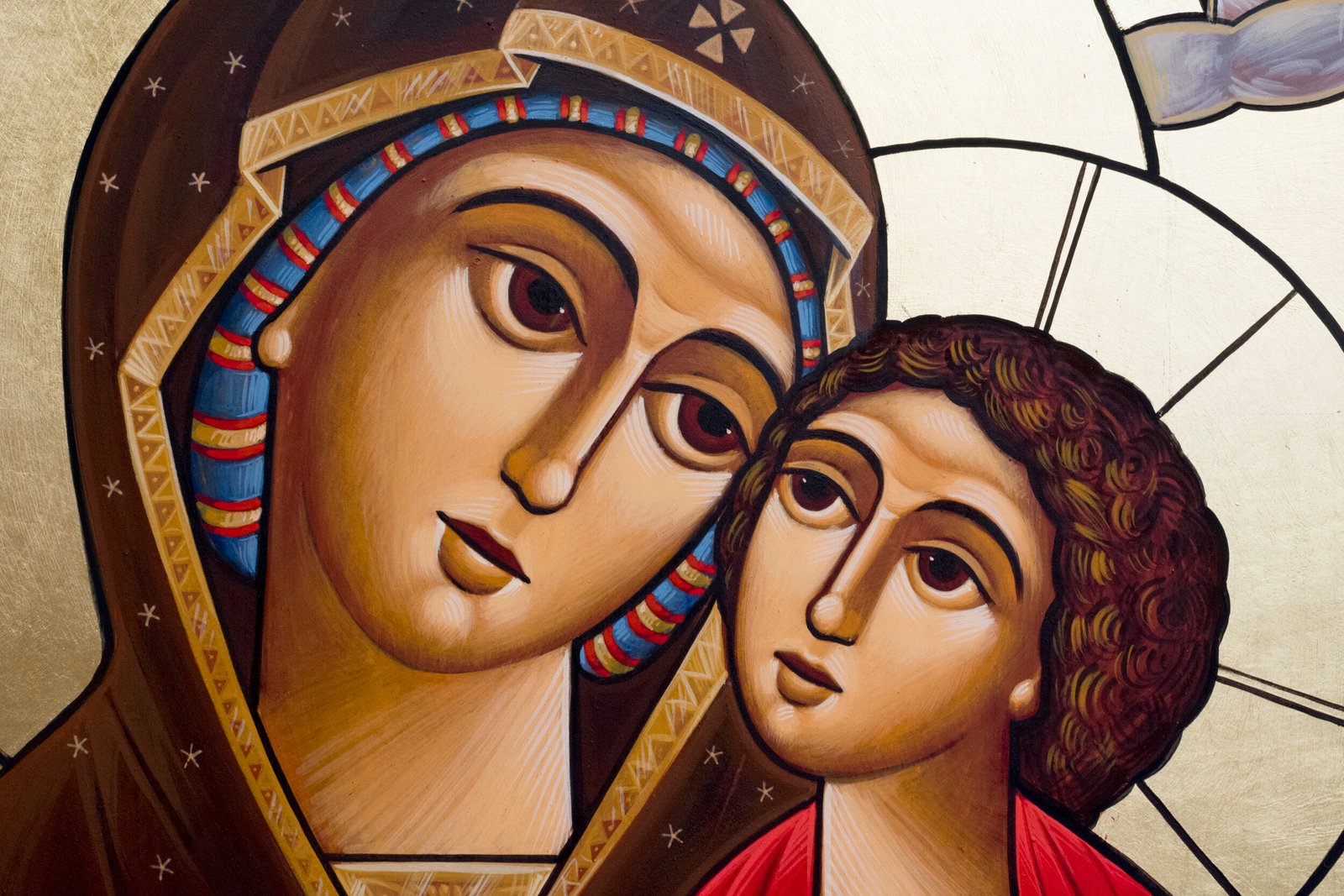The link between the concept of evolving paradigms and worldviews and the exploration of Coptic Orthodox Christianity is a fascinating one that invites us to delve deeper into the complexities of faith, culture, and history. Just as philosophy evolved from ancient Greek thinkers like Socrates and Aristotle to medieval philosophers like Augustine and Aquinas, to modern and postmodern philosophers like Descartes and Foucault, so too has Christianity evolved over the centuries, giving rise to a diverse array of denominations and theological perspectives.
At the heart of this evolution is the shifting of paradigms and worldviews, as new ideas and cultural influences shape and transform the way people understand and practice their faith. In the case of Coptic Orthodox Christianity, we can trace the evolution of the faith from its origins in the early Christian church to its unique expression in Egypt and beyond. We can explore how the faith has adapted to changing historical and cultural contexts, while still retaining its core beliefs and traditions.
By examining the evolution of Coptic Orthodox Christianity, we can also gain insight into how to navigate the challenges of choosing what to follow in a complex and diversified world. We can learn to appreciate the richness and diversity of human experience, while also recognizing the fundamental truths and values that underlie all faith traditions. Ultimately, the exploration of Coptic Orthodox Christianity invites us to engage with our own beliefs and worldviews in a deeper and more meaningful way, as we seek to understand ourselves and our place in the world.

The Christian Paradigm
The Christian paradigm is based on the belief in the existence of a loving and all-powerful God, who created the world and humanity, and who has revealed himself to humanity through various means, including scripture, tradition, and personal experience.
The Christian paradigm has evolved through different stages and movements throughout history. Some of the key stages include:
Early Christianity: the first few centuries of Christianity, characterized by the formation of the church, the spread of the gospel, and the development of the basic beliefs and practices of the faith.
Medieval Christianity: the period from the 5th to the 15th century, characterized by the establishment of the Catholic Church, the rise of monasticism, the development of scholasticism and mysticism, and the emergence of various Christian orders and movements.
Reformation: the 16th-century movement that led to the split of Western Christianity into Catholic and Protestant branches, characterized by the rejection of some of the Catholic Church’s teachings and practices, and the emphasis on the authority of scripture and personal faith.
Modern Christianity: the period from the 17th century to the present, characterized by the rise of various denominations and movements, the impact of scientific and social changes on Christian thought and practice, and the ongoing debates and discussions on issues such as biblical interpretation, social justice, and the relationship between faith and reason.
The Christian paradigm, like other paradigms, has its own challenges and controversies, including disagreements on doctrine, interpretation of scripture, and the role of faith in public life. However, it also offers a rich and diverse heritage of spiritual practices, moral values, and cultural expressions that continue to inspire and shape the lives of millions of people around the world.

Christianity in Egypt
Christianity was brought to Egypt by Saint Mark the Evangelist, one of the four evangelists and the writer of the Gospel of Mark in the New Testament. It is believed that Saint Mark came to Egypt around AD 42 and preached the Gospel in the city of Alexandria. The first church in Egypt was likely built in Alexandria, either during the time of Saint Mark or shortly thereafter.
Egyptian (Coptic) Orthodox Christianity is a branch of Orthodox Christianity that has its own unique history, theology, and liturgy. It is the largest Christian denomination in Egypt and one of the oldest Christian communities in the world, tracing its roots back to the apostolic era.
The Coptic Orthodox Church of Alexandria, also known as the Egyptian Orthodox Church, is one of the Oriental Orthodox Churches, which are separate from the Eastern Orthodox Churches. Oriental Orthodoxy split from the Eastern Orthodox Church and Roman Catholic Church in the 5th century over theological differences related to the nature of Christ.
The Coptic Orthodox Church has its own distinctive liturgy, which is based on the ancient Egyptian Coptic language and uses traditional chants, music, and iconography. It also has its own unique theological perspectives, such as the emphasis on monasticism, asceticism, and the role of the Holy Spirit in the life of the Church.
Like other Orthodox Christian churches, the Coptic Orthodox Church recognizes seven sacraments and emphasizes the importance of tradition, community, and theosis. It also places great emphasis on the veneration of saints and martyrs, especially the Virgin Mary and the Coptic martyrs who suffered persecution under the Roman Empire and Islamic rule.
The Coptic Orthodox Church has faced many challenges throughout its history, including persecution, political oppression, and sectarian violence. However, it has also had a significant impact on Egyptian and Middle Eastern culture and continues to inspire and guide millions of Coptic Christians around the world.
The Eastern Orthodox Church
While the Coptic Orthodox Church developed in Egypt, the Eastern Orthodox Church has its roots in the Byzantine Empire, which was the center of Orthodox Christianity for many centuries. The Eastern Orthodox Church traces its lineage back to the earliest Christian communities in the Middle East and Greece, and it has played a significant role in the history and culture of many countries in Eastern Europe and the Balkans.
The Eastern Orthodox Church is characterized by its rich liturgical traditions, its emphasis on mysticism and theosis (the process of becoming more like God), and its hierarchical structure. It’s theology emphasizes the importance of the incarnation and the role of the Holy Spirit in the life of the church.

Similarities and Differences between Coptic and Eastern Orthodox Churches
There are several key differences between Coptic Orthodox Christianity and Eastern Orthodox Christianity, despite both being branches of Orthodox Christianity:
- Christological differences: The Coptic Orthodox Church, along with other Oriental Orthodox Churches, believe in the Miaphysite doctrine, which states that Christ had a single, unified nature that was both human and divine. In contrast, the Eastern Orthodox Church adheres to the Chalcedonian doctrine, which teaches that Christ had two distinct natures, one human and one divine, united in one person.
- Liturgical differences: The Coptic Orthodox Church has a distinctive liturgy that is based on the ancient Egyptian Coptic language and uses traditional chants, music, and iconography. The Eastern Orthodox Church also has its own unique liturgy, but it is based on Greek, Slavonic, and other languages.
- Calendar differences: The Coptic Orthodox Church uses the ancient Egyptian calendar, which has 13 months, while the Eastern Orthodox Church uses the Julian or Gregorian calendar.
- Cultural differences: The Coptic Orthodox Church has its roots in ancient Egyptian and African culture, while the Eastern Orthodox Church is rooted in Byzantine and Greek culture.
- Organizational differences: The Coptic Orthodox Church is headed by the Pope of Alexandria and has its own hierarchy, while the Eastern Orthodox Church is divided into several autocephalous (self-governing) churches that are headed by patriarchs or bishops.

Despite these differences, both Coptic Orthodox Christianity and Eastern Orthodox Christianity share many similarities in their beliefs, practices, and spirituality, and both have played significant roles in the history of Christianity and world culture.
- Coptic Orthodox Christianity and Eastern Orthodox Christianity share many similarities in their beliefs, practices, and spirituality, including:
- Trinitarian theology: Both traditions believe in the Holy Trinity – one God in three persons: the Father, the Son (Jesus Christ), and the Holy Spirit
- Sacramental theology: Both traditions recognize the seven sacraments (mysteries) of baptism, chrismation (confirmation), Eucharist, penance, anointing of the sick, holy orders, and marriage.
- Liturgical worship: Both traditions place great emphasis on the liturgy and have developed rich and elaborate liturgical practices that involve chanting, incense, iconography, and sacramental actions.
- Mystical theology: Both traditions emphasize theosis, or the idea that human beings can become united with God through a process of spiritual transformation and purification.
- Monasticism: Both traditions have a strong tradition of monasticism, with monks and nuns dedicating their lives to prayer, contemplation, and asceticism.
- Iconography: Both traditions use icons (religious images) as a central part of their worship and spiritual life, believing that the image of Christ, the Virgin Mary, and the saints can serve as a means of connecting with the divine.
- Orthodoxy: Both traditions place a strong emphasis on the importance of tradition and orthodoxy (right belief), and believe that the Church is guided by the Holy Spirit and the teachings of the apostles.

Other Christian Churches with Similar Origins
Many Christian churches around the world have similar origin stories to the Coptic Orthodox Church in Egypt, with Christianity being introduced by a missionary or evangelist and the first church being established in a specific location. Here are a few examples:
- Ethiopian Orthodox Church: According to tradition, Christianity was introduced to Ethiopia by the apostle Philip, who preached the Gospel to an Ethiopian eunuch on the road from Jerusalem to Gaza. The Ethiopian Orthodox Church traces its origins to this early evangelization and the establishment of the first church in Ethiopia.
- Armenian Apostolic Church: The Armenian Apostolic Church was founded by the apostles Thaddeus and Bartholomew, who are believed to have preached the Gospel in Armenia in the first century AD. The first Armenian church was established in the city of Edessa, which is now in modern-day Turkey.
- Syriac Orthodox Church: The Syriac Orthodox Church traces its origins to the apostle Peter, who is believed to have preached the Gospel in the city of Antioch in the first century AD. The first Syriac church was established in Edessa, which became an important center of Christianity in the early centuries of the Church.
- Indian Orthodox Church: According to tradition, the Indian Orthodox Church was founded by the apostle Thomas, who traveled to India in the first century AD and preached the Gospel to the local people. The first Indian church was established in the city of Malankara, which is now in modern-day Kerala.
These churches, like the Coptic Orthodox Church, have a long and rich history, with unique traditions and practices that have evolved over time.

Conclusion
As Christianity spread throughout Egypt, the Coptic Orthodox Church became an integral part of Egyptian culture and society. Today, the Coptic Orthodox Church is one of the oldest Christian denominations in the world, and its members have a deep sense of history and tradition.
Despite its ancient roots, the Coptic Orthodox Church has faced numerous challenges throughout its history. In the early centuries of Christianity, the church had to contend with persecution from the Roman Empire, which saw it as a threat to its authority. Later, the Coptic Orthodox Church faced challenges from other Christian denominations, particularly during the time of the Council of Chalcedon in 451 CE, when the church split from the Eastern Orthodox Church over theological differences.
Today, the Coptic Orthodox Church continues to face challenges, both internal and external. In recent years, the church has had to deal with issues such as discrimination, sectarianism, and political instability in Egypt. Despite these challenges, however, the church remains a vital and dynamic force in the lives of millions of people around the world.
Whether you’re a devout Christian or simply curious about the history of religion, the Coptic Orthodox Church is a fascinating subject that offers a unique perspective on the history of Christianity and the role of religion in society. So why not explore this rich and vibrant faith today?




